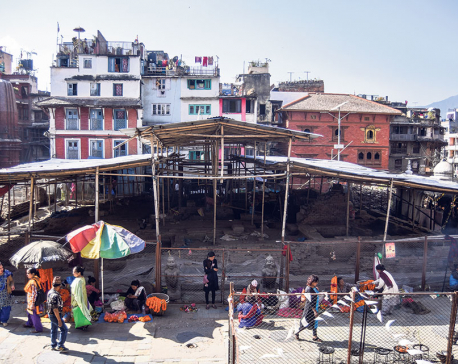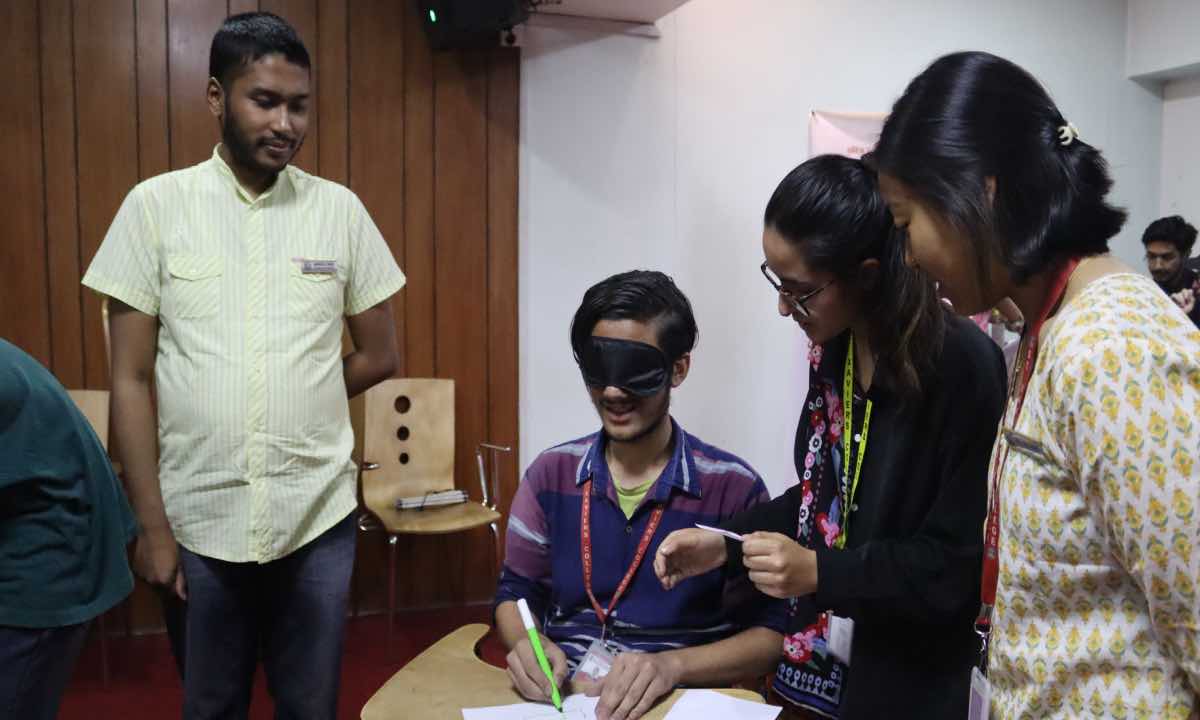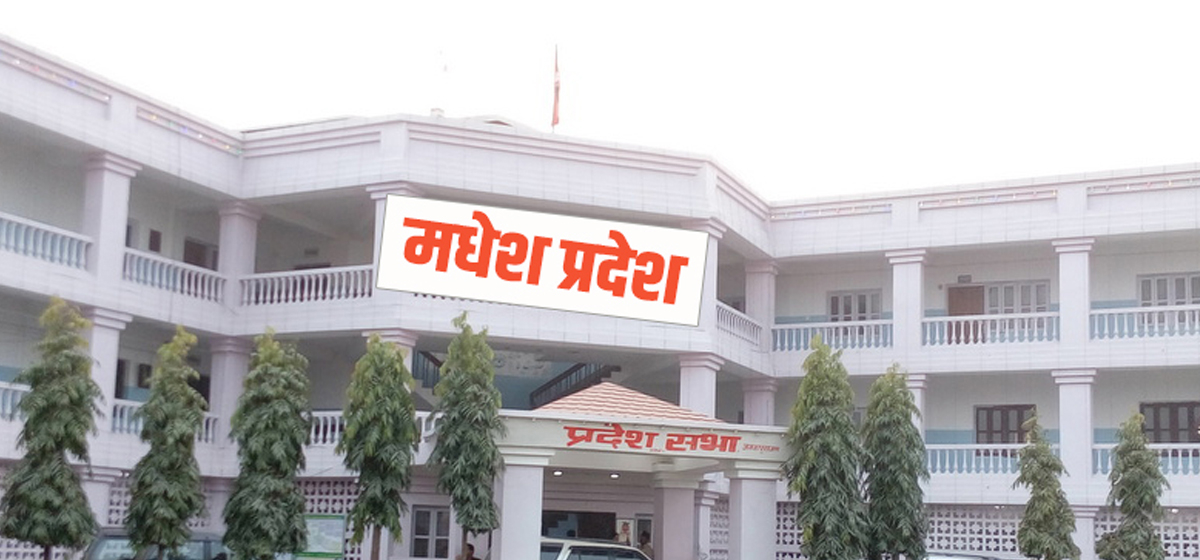
OR
Durham archeologists resuming Kasthamandap study today
Published On: November 12, 2016 01:30 AM NPT By: Republica | @RepublicaNepal
KATHMANDU, Nov 12: The archaeologists from the Department of Archeology (DoA) and Durham University of the UK are conducting archeological study at the foundation of historical the Kasthamandap temple near the Kathmandu Durbar Square from Saturday.
The student aims to identify the location of the fourth staddle stone, which supported the fourth central pillar of Kasthamandap temple at the foundation level. Last year, the team had identified just three of the total four staddle stones.
“We have set a plan to start excavation work at the foundation level of the Kasthamandap temple from tomorrow (Saturday). We have estimated that we will finish the field work by December 20,” said Professor Robin Coningham of the university, who is also the project co-director, at a briefing organized in Kathmandu on Friday. “This is the continuation of our last year's excavation work.”
The last year's archeological investigation had suggested that the Kasthapandap was constructed in the 8th century, 400 years earlier than traditionally thought.
The temple was destroyed in the April 2015 earthquake. After thier study last year, they have identified that the temple had collapsed due to lack of timely maintenance at the foundation.
According to Chief Archaeological officer of DoA Ram Badadur Kunwar, the team will also conduct the archaeological study in the site of Guruju Sattal, which was also badly damaged during last year's earthquake. He said that the excavation at the site will identify the presence of subsurface archaeological remains, earlier cultural sequences and which will be helpful evaluating the foundation of the damaged monument.
The DoA had handed over the reconstruction task of the Kasthamandap Temple to Kathmandu Metropolitan City (KMC) office a few months ago. The KMC is preparing solicit bid for the work in the near future, officials said.
The university's team had also conducted archeological investigations in Patan and Bhaktapur durbar suqures, using Ground Penetrating Radar (GPR) and excavation to identify and map surface archeological heritage and evaluate the foundations of major damaged monuments.
You May Like This

Kasthamandap reports 30 percent progress in reconstruction works
KATHMANDU, June 7: Thirty percent reconstruction works of the historic Kasthamandap have been completed. The Kasthamandap Reconstruction Committee has said... Read More...

Nottinghamshire all-rounder Paul Coughlin signs for Pokhara Rhinos
KATHMANDU, Nov 24: The Everest Premier League franchise Pokhara Rhinos has announced its second overseas recruit for the upcoming season revealing... Read More...

Budhanilkantha, Kasthamandap cruise into final
KATHMANDU, Aug 25: Budhanilkantha School and Kasthamandap College have fixed the title clash of First Inter-college A Level Football Tournament... Read More...






Just In
- Forest fire destroys 13 houses in Khotang
- First meeting of Nepal-China aid projects concludes
- Lungeli appointed as Minister for Labor and Transport in Madhesh province govt
- Bus knocks down a pilgrim to death in Chitwan
- One killed in tractor-hit
- Karnali Chief Minister Kandel to seek vote of confidence today
- Chain for Change organizes ‘Project Wings to Dreams’ orientation event for inclusive education
- Gold price decreases by Rs 200 per tola today













Leave A Comment